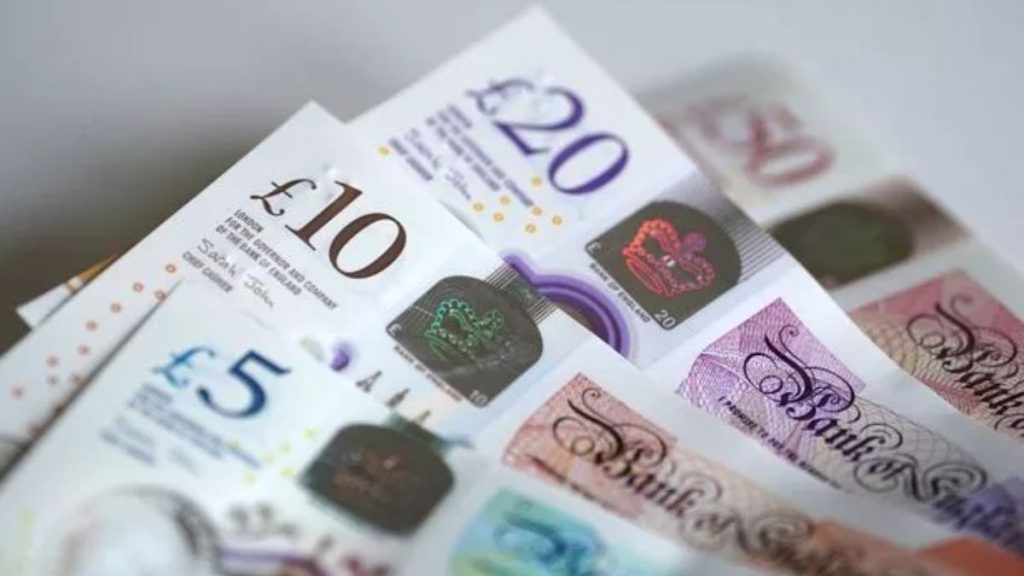Small and medium-sized enterprises (SMEs) are the backbone of the UK economy, employing millions of workers and driving local as well as national growth. Recognising the challenges that businesses have faced in recent years due to inflation, rising operational costs, and economic uncertainty, the UK government has now confirmed a £1,000 tax relief for SMEs in 2025.
Supporting UK Businesses Through Economic Challenges

The UK government’s new £1,000 SME tax relief has been introduced to directly support small and medium-sized enterprises struggling with tight margins and post-pandemic pressures. Rising costs, inflation, and slower growth have made it harder for SMEs to sustain operations or invest in innovation.
This initiative will provide direct financial relief, reducing the tax burden for qualifying businesses and allowing them to reinvest funds into job creation, digital upgrades, and sustainability projects.
What Is the £1,000 Tax Relief for SMEs?
The £1,000 tax relief is a simplified tax deduction available to eligible small and medium-sized enterprises across the UK. Instead of applying for complex credits or rebates, qualifying businesses will receive a straightforward £1,000 reduction in their taxable profits.
This deduction can be applied against Corporation Tax (for limited companies) or Income Tax (for sole traders and partnerships). The primary goal is to give smaller businesses a quick and uncomplicated way to lower their tax bills for the 2025 tax year.
Why the Government Introduced This Relief
The decision to introduce this relief was driven by several economic and social factors affecting SMEs across the country:
1. Support for Economic Recovery
Many SMEs continue to face reduced consumer spending and higher running costs. The relief aims to provide much-needed breathing space to stabilise cash flow.
2. Incentivising Job Creation
By lowering tax liabilities, the government hopes businesses will retain more employees or create new jobs.
3. Promoting Innovation and Growth
SMEs often drive innovation but face funding constraints. The £1,000 tax cut can free up resources for research, technology, and product development.
4. Simplifying the Tax Process
Rather than navigating multiple small-scale relief programs, this initiative consolidates support into one easy-to-claim deduction, streamlining the tax process for businesses of all sizes.
Who Can Claim the £1,000 SME Tax Relief?
The relief has been designed to include the majority of UK-based small and medium enterprises, provided they meet certain criteria.
Eligibility Requirements:
- Business Size: Must qualify as an SME — fewer than 250 employees and turnover below £50 million.
- Registration: Business must be registered in the UK (with Companies House or HMRC).
- Active Trading: The business must be actively trading during the 2024/25 tax year. Dormant companies are excluded.
- Tax Compliance: All prior tax filings must be up to date with no outstanding debts to HMRC.
- Industry Exemptions: Some regulated sectors, like financial services and insurance, may have specific exclusions or separate criteria.
Businesses unsure of their status can verify eligibility via the official HMRC website or through their accountant.
How the £1,000 Relief Will Be Applied
The mechanism for claiming the relief depends on the type of business:
Limited Companies
For incorporated businesses, the £1,000 deduction will apply against Corporation Tax for the 2025/26 financial year.
Sole Traders and Partnerships
These businesses can claim the relief as a reduction in taxable profits, effectively lowering their Income Tax liability.
Automatic Adjustment by HMRC
Once a business declares its eligibility in its tax return, HMRC will automatically apply the deduction, reducing the amount owed.
Step-by-Step: How to Claim the SME £1,000 Tax Relief
The government has streamlined the claim process to make it as easy as possible for business owners. Here’s how to ensure your business benefits:
- Prepare Accurate Accounts – Keep bookkeeping and expense records updated for the 2024/25 financial year.
- File the Correct Return – When submitting your Corporation Tax (CT600) or Self-Assessment return, tick the section related to SME tax relief.
- Automatic Deduction – Once your tax return is processed, HMRC will automatically deduct up to £1,000 from your bill.
- Retain Supporting Documents – Maintain financial records, receipts, and tax returns for audit purposes.
- Confirm Application Status – Use your HMRC online account to check if the deduction has been applied successfully.
Deadlines for Claiming the Relief
The relief follows the standard tax filing timelines. Missing these deadlines could result in loss of eligibility.
- Sole Traders / Partnerships: Must claim by 31 January 2026 for the 2024/25 tax year.
- Limited Companies: Must submit within 12 months after the end of their accounting period.
Timely filing ensures smooth processing and prevents disputes or disqualification.
Example: How the Relief Impacts Tax Bills
To understand its practical value, consider this example:
A bakery in Birmingham earns a £40,000 profit in the 2025 financial year.
- Without the relief: Corporation Tax at 19% = £7,600.
- With the relief: £1,000 deducted from taxable profit, reducing the liability to £6,600.
That extra £1,000 could fund new equipment, higher staff wages, or digital marketing efforts — all of which help sustain long-term growth.
Mistakes to Avoid When Claiming
While the process is simple, some errors could delay or cancel your claim. Avoid these common pitfalls:
- Late Filing: Missing deadlines automatically disqualifies you.
- Incorrect Tax Data: Ensure all financial information matches official records.
- Assuming Automatic Eligibility: Verify that your business qualifies under HMRC definitions.
- Ignoring Record-Keeping: Maintain proper documentation to support your claim in case of an audit.
- Confusing Reliefs: This £1,000 deduction is separate from other reliefs such as R&D tax credits or capital allowances.
Combining the £1,000 Relief With Other Tax Benefits
The £1,000 SME relief doesn’t cancel other benefits. Businesses can stack it with additional deductions if eligible.
Other Available Schemes Include:
- Annual Investment Allowance (AIA): For spending on machinery or equipment.
- R&D Tax Credits: For innovation and product development.
- Employment Allowance: Reduces National Insurance contributions.
- Small Business Rate Relief: For companies operating from smaller premises.
By combining multiple reliefs, SMEs can optimise savings and reinvest more efficiently into their operations.
Key Benefits of the SME Tax Relief
The introduction of this £1,000 SME tax deduction brings several immediate and long-term advantages for businesses across the UK.
Short-Term Benefits:
- Immediate reduction in annual tax liability.
- Simplified process with fewer administrative steps.
- Boosts cash flow for operational expenses.
Long-Term Advantages:
- Encourages reinvestment into business expansion.
- Supports employment and innovation in local communities.
- Contributes to national economic recovery by strengthening small enterprises.
Government’s Broader Economic Goal
The UK government’s SME-focused policy is part of its long-term plan to stabilise the economy through grassroots business support. SMEs make up more than 99% of private sector companies and contribute nearly half of national turnover.
By offering this tax break, policymakers aim to promote sustainable growth, support job creation, and help entrepreneurs recover from economic challenges such as rising interest rates and inflation.
Tips for Making the Most of the Relief
- Reinvest Wisely: Use the savings for business expansion, hiring, or digital transformation.
- Seek Professional Advice: Consult tax specialists to ensure full compliance and explore additional benefits.
- Plan Ahead: Combine the relief with upcoming government schemes or grants.
- Maintain Transparency: Keep all records updated for HMRC audits or future applications.
- Monitor HMRC Updates: Policy details may evolve, so stay informed through official channels.
FAQs on the £1,000 SME Tax Relief 2025
Q1. What is the purpose of the £1,000 SME Tax Relief 2025?
It’s a tax deduction designed to reduce the financial pressure on small and medium-sized enterprises and encourage business reinvestment and growth.
Q2. How do I claim the relief?
You can claim it through your annual tax return — either your Corporation Tax (CT600) form or Self-Assessment return. HMRC will automatically apply the deduction once eligibility is confirmed.
Q3. Can I claim this relief along with other tax credits?
Yes, you can still claim other reliefs such as R&D tax credits, Employment Allowance, or Small Business Rate Relief.
Q4. When is the deadline for claiming?
Sole traders and partnerships must claim by 31 January 2026, while limited companies have 12 months after their accounting year ends.
Q5. Will this relief be permanent?
Currently, it is introduced for the 2025 tax year, but depending on its success and economic impact, the government may extend or adjust it in future budgets.
















